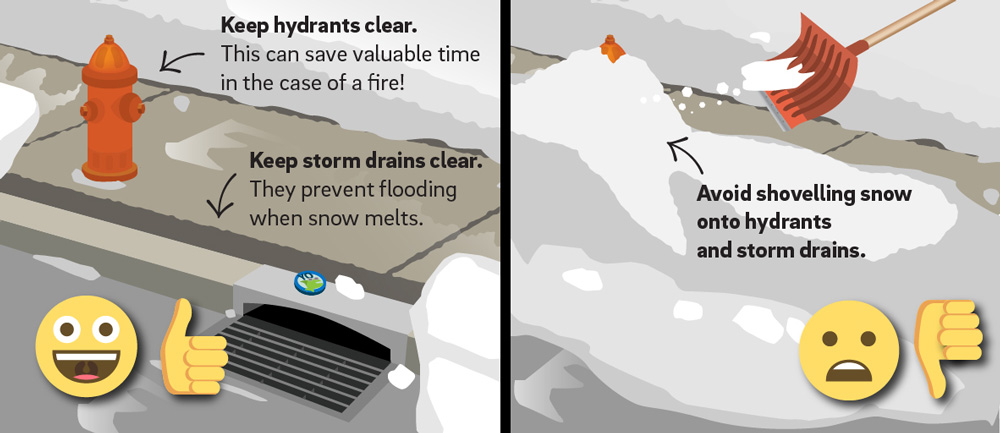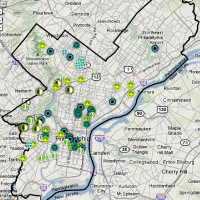#PHLSnow Tips: Don’t Let Snow Slow Response to Water and Fire Emergencies!

If you have a pipe burst, we need to access the curb box seen above to shut off water in an emergency. Make sure it's free of snow and ice to reduce the chance of major property damage. Credit: PWD
While we’re usually busy dealing with that wetter form of snow (rain!), the white stuff comes with a special set of challenges and risks—both for Philadelphia Water Department infrastructure and our crews out on the streets.
We’re asking citizens around Philadelphia give us a hand once the snow falls. Your assistance helps to make sure our crews can efficiently tackle any potential problems as they come up.
Here’s what you can do to help:
- When shoveling, do not pile snow on top of storm drain inlets. Blocked storm drains can create flooding.
- Make sure all fire hydrants are clear of snow, visible, and easily accessible.
- Make sure your valve cover (see image at top) and other utility access points are clear of snow and ice and are easily visible to ensure the fastest shutoff in an emergency.
Why is it so important to make sure storm drains, hydrants and utility access points are free of snow and ice?
With storm drains, we want your help in making sure they’re cleared off so melting snow can easily enter the sewer system. Blocked storm drains can create flooding, especially when warmer days follow a storm—as appears to be the case with the current forecast—and large volumes of stormwater created by melting snow can’t drain properly. This can also create dangerous ice patches if temperatures drop overnight.
Fire hydrants, of course, are essential to public safety. While they may be bright orange, snow drifts created by wind or people shoveling sidewalks and parking spaces can make them nearly invisible. In the event that the Fire Department needs to respond to an emergency, we need your help to make sure all hydrants are clear of snow, visible, and easily accessible.
When shoveling the area in front of your home or business, please take a few minutes to uncover the hydrants:

A good rule of thumb is to clear at least 3 feet around the entire hydrant. This simple task can save crucial time that may be needed to fight a fire on your block.
Valve covers and curb boxes: Cold weather and snow can create a spike in problems with the water pipes and other utilities that connect to your property at the curb. Sidewalks that haven’t been cleared can seriously slow response times in emergency situations such as a burst water service pipe. In the event of a burst or leaking pipe, crews sent out for an emergency shutoff need to be able to quickly locate your curb box, which is usually located beneath the sidewalk and covered with a metal valve cover that’s a little smaller than a dinner plate (see image at top).
When shoveling, make sure the valve cover and other utility access points are cleared of snow and ice and are easily visible. It can mean the difference between no property damage because we were able to quickly turn the water off and increased damage to personal property and public streets.
Your help in making sure Philadelphia Water and Fire Department crews can do their work is greatly appreciated, and it might just help you protect your property if an emergency does happen.
With a little assistance from each neighbor, we will be in a better position following the storm to make sure any challenges that come up will not be hindered by having to look under piles of snow or inches of ice.
We thank our customers in advance for working with us during this coming winter storm!
More: Check out our Cold Weather Tips, a guide to preventing damage to your home’s plumbing this winter!





